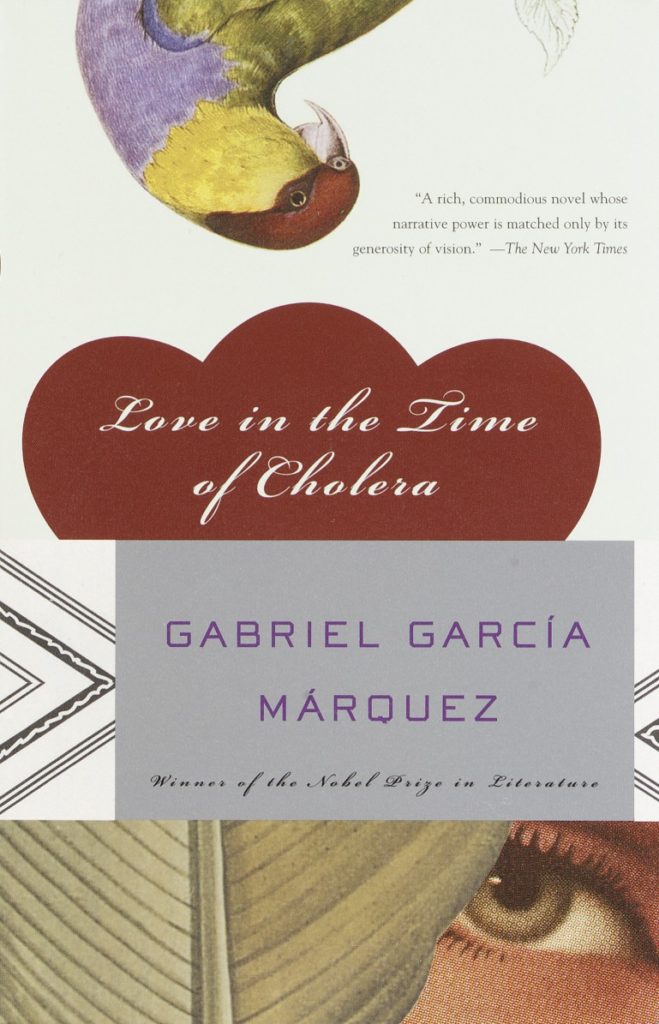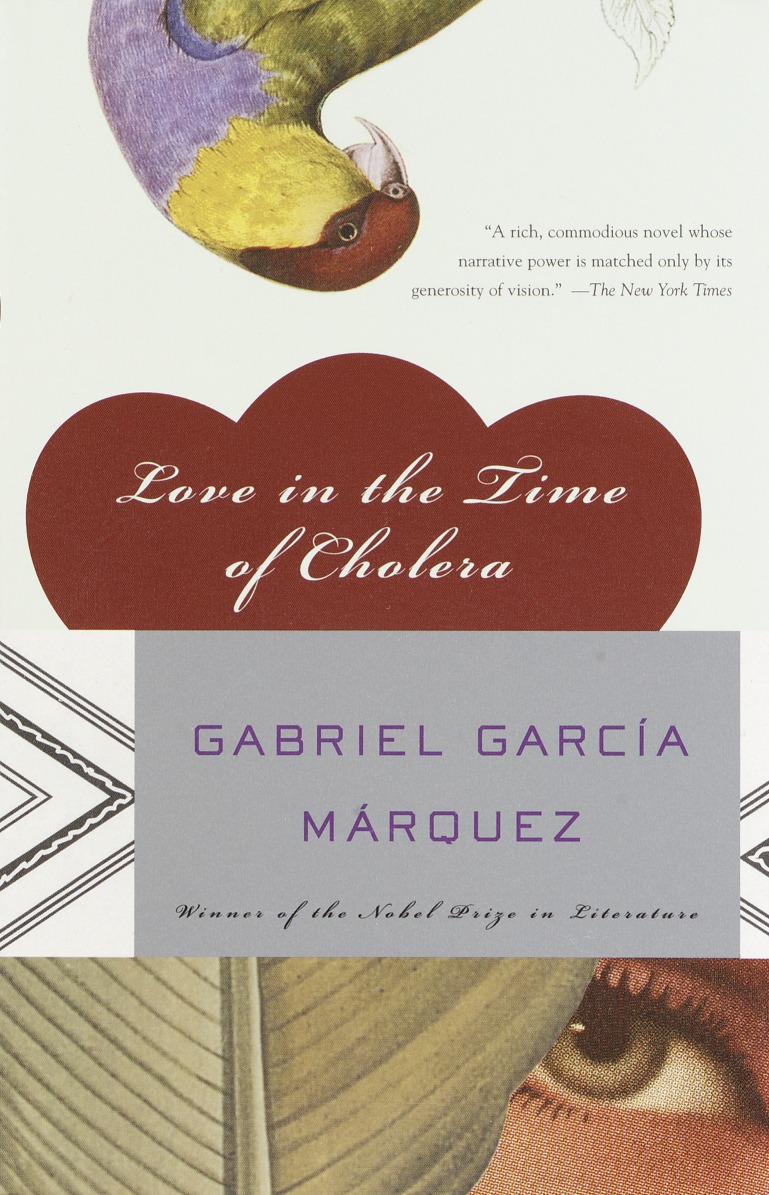Love in the Time of Cholera by Gabriel García Márquez
Reviewed by Michael Attard

Gabriel García Márquez was born in Colombia in 1927. He wrote sixteen novels during his lifetime and was awarded the Nobel Prize for Literature in 1982. His novel, Love in the Time of Cholera, was published in 1985. It is not generally considered to be his best work, but it has been acclaimed as his most romantic novel.
The setting is a coastal city in Colombia, and the timeframe covers about sixty years from the later 19th century to the early 20th century. The premise involves the question, “What happens when a young man’s unrequited love is unable to break his spirit?”
The protagonist, Florentino Ariza, has an air of heroism about him. Similar to Don Quixote, he will wait patiently and honorably to serve his lady at her bidding. And in this case, since the woman of his dreams, Fermina Daza, has married the young, rich, and respectable Dr. Urbino and wants nothing to do with our protagonist, Florentino has a long time to wait. And it is not as if Florentino had no other options. “When he met Fermina Daza he was the most sought-after young man in his social circle.” He was very thin and needed glasses for his myopia, but this only “added to his forlorn appearance.”
Florentino had a strong basis for his sincerely professed love. While delivering a telegram to her father, the two youths exchanged a “casual glance,” beginning the flow of love letters from Florentino to Fermina, enchanting her so much that she would ultimately succumb to the power of his poetic compositions. But without her father’s approval, their relationship was doomed and Dr. Urbino became the more acceptable match.
The conflict in the story is not the typical protagonist-antagonist struggle. Dr. Urbino, the husband of Florentino’s passion , is not the antagonist. Florentino himself did not realize this until after a particular conversation with the doctor. He realized that he and “this man, whom he had always considered his personal enemy, were victims of the same fate and shared the hazards of a common passion.” The antagonist is actually Fermina Daza herself. Florentino must somehow penetrate the steel encasing her heart, a shield that has not weakened over fifty years, in the same way as her physical health, beauty, and hopes have diminished into the mist of time.
With the doctor’s death early in the story, but fifty years later than Florentino had wished, he wastes no time and, as the last remaining guest at the funeral, speaks directly to Fermina Daza. “I have waited for this opportunity for more than half a century, to repeat to you once again my vow of eternal fidelity and everlasting love.”
Her response was not a surprise. “Get out of here.”
For the next 220 pages, the author fills in the details of the last half century. We are also given some insight into the role of cholera in the story, as fully suggested by the book’s title. Early in the romance, Florentino “became disoriented… his mother was terrified… his condition did not resemble the turmoil of love so much as the devastation of cholera.” There are other instances where cholera creeps into the story, but it is more in the background rather than leading the story. I cannot say for sure on this point, but perhaps cholera is a metaphor for the fever of love.
As we wait for the death of Dr. Urbino, it becomes evident that Florentino has no compulsion to remain celibate. A great deal of the book is about his sexual exploits with all sorts of women, including the amusing story of how he lost his virginity. And it is not only in regard to these episodes, but with equal respect to other events, that the author’s master of language and writing skills make the read exceptionally enjoyable. In one scene referring to Fermina Daza, the author, through Florentino, captures all that changes us and everything that keeps us as we are. He saw her “more polished and intense, her beauty purified by the restraint of maturity.”
Fermina Daza is not free of demons, but most of these are creations of her own temperament. And the author succinctly narrates the inner machinations of her mind: “free at last of illusions, when she began to detect the disillusionment of never having been what she had dreamed of being.”
As in most love stories, the path was never easy for our intrepid romantic, and he was a textbook case of when love is blind: “It was in fact the insulting letter he had expected to receive.” But “All that interested him was that the letter, in and of itself, gave him the opportunity, and even recognized his right, to respond.”
Time passes, and in that flow, we learn that Fermina Daza has been carefully reading Florentino’s letters, and she saw them as more than missives. “They were a meditation on life, love, old age, death…. In this way an unknown Florentino was revealed to her.” From this point on, there are another sixty pages. And what is the conclusion of this love story? “It is life, more than death, that has no limits.”
The Reviewer Michael Attard is a Canadian who has lived in Gwangju since 2004. Though officially retired, he still teaches a few private English classes. He enjoys reading all kinds of books and writes for fun. When the weather is nice, you may find him on a hiking trail.





